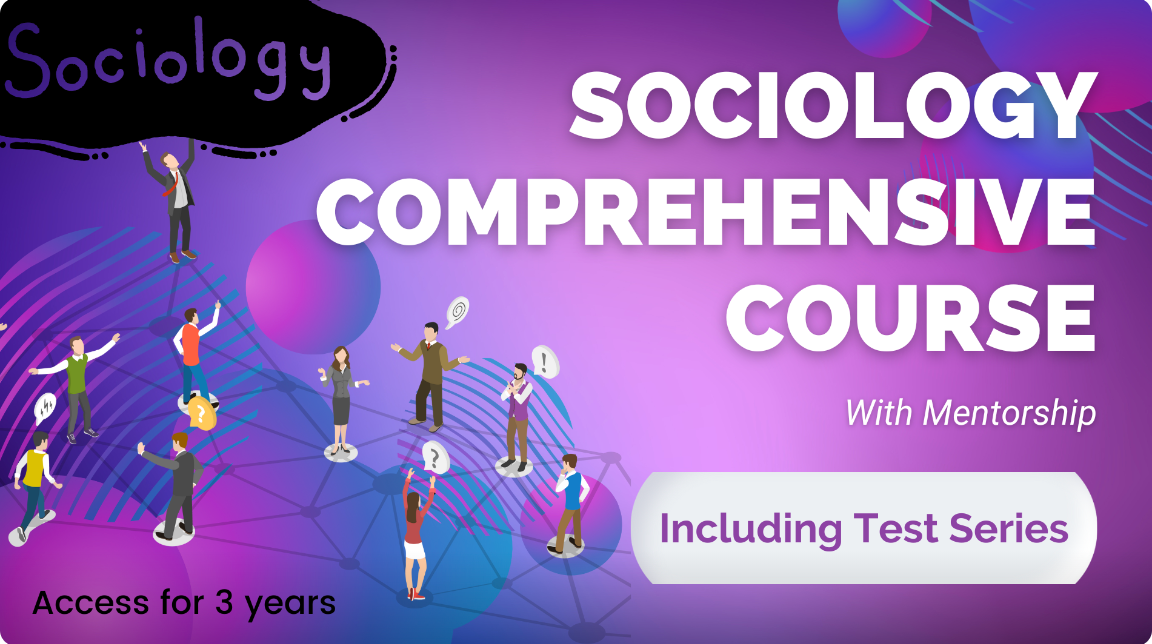Questions
- “Technology is the key to understanding social change today.” Critically analyse. (10 Marks)
- Ghurye argued that the whole Indian society is caste based and even tribals are part of it. Elaborate. (20 Marks)
Download Model Structures PDF
Model Structures
Q1. “Technology is the key to understanding social change today.” Critically analyse. (10 Marks)
Introduction
- Define Social Change
- Technology is a product of civilization. According to Karl Marx even the formation of social relations and mental conceptions and attitudes are dependent upon technology.
- Veblen has regarded technology as the sole explanation of social change.
- W.F Ogburn says technology changes society by changing our environments to which we in turn adapt. This change is usually in the material environment and the adjustment that we make with these changes often modifies customs and social institutions.
- Technology and Social Institutions:
- Many functions of the family have been taken away by other agencies.
- Marriage is losing its sanctity. It is treated as a civil contract rather than a sacred bond. Marriages are becoming more and more unstable. Instances of divorce, desertion and separation are increasing.
- Technology has elevated the status of women but it has also contributed to the stresses and strains in the relations between men and women at home.
- Religion is losing hold over the members. People are becoming more secular, rational and scientific but less religious in their outlook. Inventions and discoveries in science have shaken the foundations of religion.
- The function of the state or the field of state activity has been widened. Modern technology has made the states perform such functions as the protection of the aged, the weaker section and the minorities making provision for education, health care etc. Transportation and communication inventions are leading to a shift of functions from local government to the central government of the whole state.
- The modern inventions have also strengthened nationalism. The modern governments that rule through the bureaucracy have further impersonalized human relations.
- The most striking change in modern times is the change in economic organisation. Industry has been taken away from the household and new type of economic organisations have been set up such as factories, stores, banks, corporations etc.
Conclusions
- Conclude on the lines of the answer.
Q2. Ghurye argued that the whole Indian society is caste-based, and even tribals are part of it. Elaborate. (20 Marks)
Introduction
- Ghurye believed in the diffusionist approach, according to which caste originated in Gangetic plains and then spread to other parts of the country. He examined caste from Indological, comparative and integrative perspectives.
Main body
- According to Ghurye caste, though it originated in plains, it was a pan Indian phenomenon. Even tribes are also part of the system.
- His views were in contrast to the colonial view, which saw both tribes and caste as two different concepts.
- To him tribals are ‘backward Hindus’ who gradually lost cultural contact leading to backwardness.
- Integration of tribals with mainstream Hindu society
- He opposed the colonial view of isolating tribals and argued that they should be assimilated in mainstream Hindu society.
- Various tribes are at various levels of assimilation in Hindu society. Few of them took education and are making shifts in their ritual dimensions to embrace Hindu culture, thus there is no need for a separate tribal identity for them.
- He presented examples of Bhils and Gonds of central India who over generations have accepted and assimilated into Hindu culture.
- Some others remained loosely integrated and the rest living in deep forests and hills were barely touched by Hinduism. He called them ‘imperfectly integrated classes of Hindu Society’.
- He argued that Hinduization of tribes is to be done for the process of development and for that ‘grand process of merger’ is to be followed.
- Andre Beteille was also of the view that tribe and caste are similar as there are little racial and language differences.
- Ghurye is criticised:
- For his over-Hinduised view of Indian society.
- He took a favourable view of caste and failed to see its dehumanising aspect.
Conclusion
- Ghurye visualised tribals as part of the larger Indian society and opposed the British view of isolation. This, in turn, was a pioneering step towards the integration and assimilation of tribes into mainstream society.

